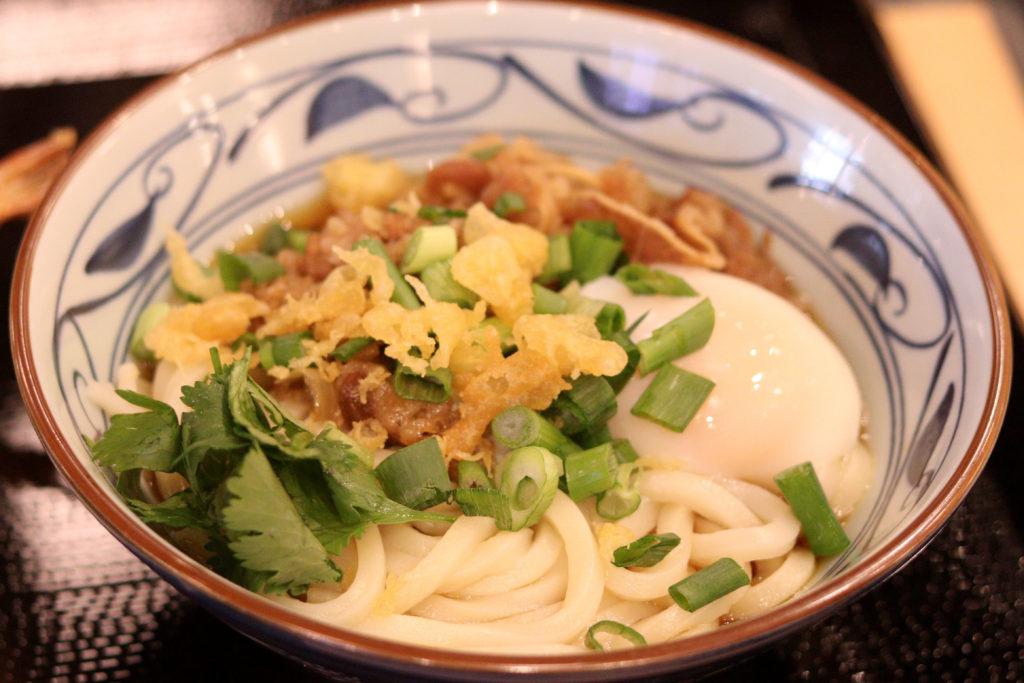San Franciscans have always seemed to appreciate noodles. Maybe it’s the mild-cold weather that makes a bowl of noodles cozy or the cheap price point that attracts a crowd. Whatever the reason, noodle-oriented franchises are being noticed, and two new ones are here to stay.
Ippudo SF is a sleek and modern – slightly upscale – space tucked off in Yerba Buena’s scenic pedestrian street. Equipped with a full sake bar and an expansive selection of Asian beers, matched with quick service and an attentive waitstaff, it’s no wonder that since its soft opening in late January, people are lined up down the street just to see what it’s about.
But Ippudo has mastered that mid-to-upscale faux dining experience that San Franciscan millennials love. You can spend $15-$20 dollars on something authentic but customizable down to the noodle firmness. You can pair your meal with a Japanese beer you can’t buy just anywhere or some sake. And if you want, you can see them make your food. All while feeling like you’re at a place that should be more expensive than it is.
Jana Lee, a graduate of Santa Clara University who works at a pharmaceutical company in the city, agrees that the ambiance, service and communal feeling of SF Ippudo make for a good dining experience.
“The SF location is good, but the New York location is great,” she says. Lee recommends the Shiromaru Classic for the cleanest, least fatty and lightest ramen for $14 dollars. The pork buns are also on her list of recommendations.

Lee says that the price is fair for the experience you are getting, “Of course living in San Francisco, my idea of what is cheap is inflated but the price is okay,” she says, “It’s reflective of the quality of ingredients you are getting and the experience.”
She says for ramen, it is about the sit in your mouth and chew of the ingredients that determines the quality. Having had noodles from Japan before, she mentions that there is still a big difference in quality.
“In Japan, it will be way better obviously and cheaper. Noodles are supposed to be a cheap, easy and quick meal.”
Best part is, if you need more noodles, you tell your waiter “Kaedama,” and they will quickly get you another serving of ramen to eat with the rest of your soup for just two dollars.
According to Japanology, the differences between ramen and udon is more complex than their presentation.
Ramen is relatively new to Japan, only being introduced from China, 100 years ago. It is informally known as the most popular noodle dish in Japan for people who want to eat a cheap and good meal on the go. It can be comprised of many different ingredients that offer a variety of acidity and saltiness, but the four most basic broths include salt, pork, miso and soy sauce. The noodles are wheat-based and almost always thin, with varying firmness.
Udon seems to be more noodle-centric than other Japanese noodle dishes. It is less about what the noodles are paired with and more about the quality of the noodles themselves. Udon can be served hot or cold depending on preference and the season and because of their neutral flavor, the thicker noodles can be served with almost any broth you choose, ranging from curry to fish to pork.
Marugame Udon is another highly anticipated noodle spot that opened up in Stonestown in mid-January, whose continuous lines show promise that the food will match the hype.
The SF restaurant is the first spot outside of Hawaii to open and has been creating a buzz for its made-to-order noodles and affordable prices. They specialize in udon noodles, which provide a thicker and heartier meal than your typical noodle dish. Udon is traditionally served in a simple and clean way, with fewer toppings than ramen. This puts an emphasis on the quality of the noodles themselves.
The restaurant operates cafeteria-style where you walk in, take a tray and essentially watch your noodles be made. Each stop on the way builds your udon, according to the menu board. The types of udon can be served hot or cold. And while there aren’t too many varieties, the selection they have caters to a wide range of flavors ranging from curries to a twist on the classic egg drop soup.
Toward the end of the line, there are fried appetizers like various tempura vegetable and shrimp. If you are feeling adventurous, they have a few musubis to try out for only $1.50 each.
Amber Ma, a communicative disorders studies student at SF State, says that while she thinks the price is fair and Marugame offers a good, hearty meal, the line is just too long.
“I got the curry udon and shrimp tempura for under $10 which is really good. But the first time I came here, the line snaked around the front of the mall,” she says. “I would come here more often if the line was shorter.”
Both new noodle spots accept the challenge of making Japanese noodles personable yet quick and easy. While udon is a very different experience than ramen, these new joints have proven to be popular for a good reason: Marugame and Ippudo have proven to have mastered noodles in their respective disciplines.







